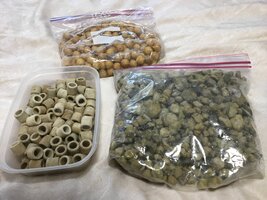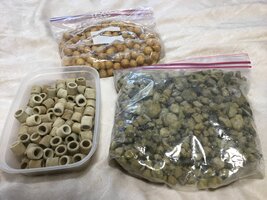Hi all,
You could potentially have pumice <"which would be alkaline (basic)">, but you never will find it in commercial workable deposits.
cheers Darrel
No, it shouldn't. They need to be physically stable like sintered glass, plastic or ceramic.does Siporax or Matrix or any other media discussed in this thread, affect the hardness of the water or the pH?
You could potentially have pumice <"which would be alkaline (basic)">, but you never will find it in commercial workable deposits.
cheers Darrel









